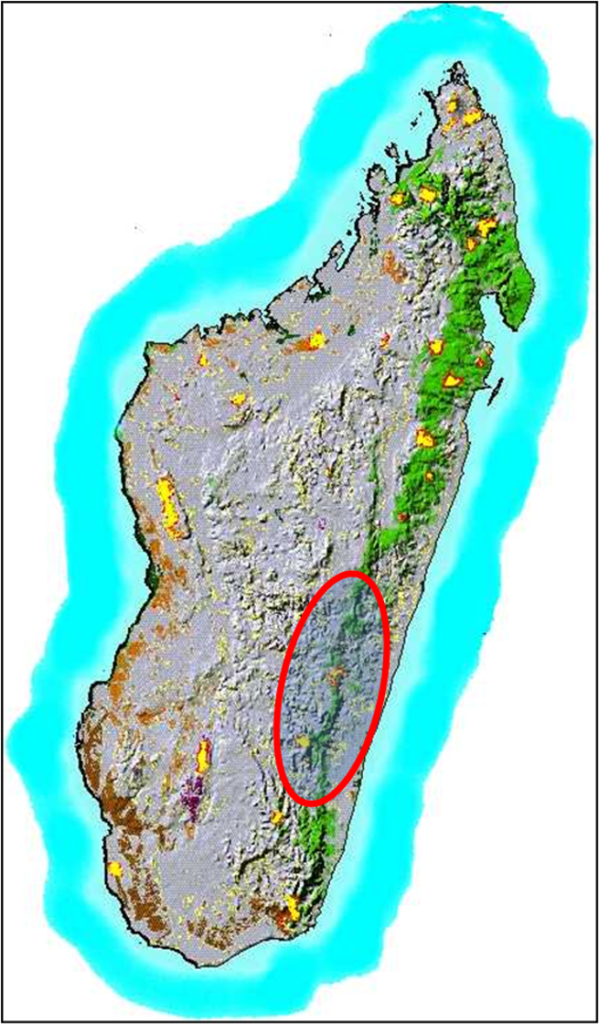Role, Pressures, and Protection

Unfortunately, this wealth does not prevent its degradation due to various reasons, notably uncontrolled migration into the heart of the protected forest, mining (especially gold mining) in several areas, and illegal exploitation of precious woods. The overexploitation of the surrounding area is a result of the isolation and poverty of the local population.
In 1999, a structure named the Multi-Local Planning Committee for Natural Resources (CMP) was established. It played an advocacy role in obtaining protected status for the Corridor. With conservation actors in the Fianarantsoa province and regional and local authorities, the process of establishing the new COFAV protected area was initiated. As a result, the corridor, measuring 214,186 hectares, received temporary protected status in 2006 and the final decree for its creation as a Protected Area, Category V-IUCN, in 2015, managed by Conservation International.
